Fiberglass Putty
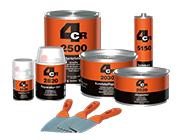
Fiberglass body putty
-
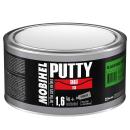 40090301Fiberglass PuttySMART Tec 0.5kg
40090301Fiberglass PuttySMART Tec 0.5kg -
 40090302Fiberglass PuttySMART Tec 1.6kg
40090302Fiberglass PuttySMART Tec 1.6kg -
 MFE1.8Eco Fiberglass PuttyBlue - 1.8kg
MFE1.8Eco Fiberglass PuttyBlue - 1.8kg -
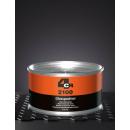 2100.xxxxFiberglass PuttyGreen - 4CR
2100.xxxxFiberglass PuttyGreen - 4CR -
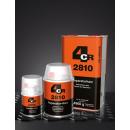 2810.0250Polyester resinWith Hardener - 250g
2810.0250Polyester resinWith Hardener - 250g -
 2810.1000Polyester resinWith Hardener - 1kg
2810.1000Polyester resinWith Hardener - 1kg -
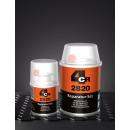 2820.xxxxPolyester repair kitwith Hardener
2820.xxxxPolyester repair kitwith Hardener -
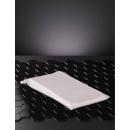 283x.xxxxFiberglass1m2 - 4CR
283x.xxxxFiberglass1m2 - 4CR
︾
Fiberglass putty: toughness and adhesion for demanding repairs:
In the day-to-day work of a bodybuilder, some damage requires a stronger product than a conventional Universal putty. Fiberglass putty is the solution of choice for deep or structural bodywork repairs. Thanks to its Fiberglass reinforcement, it offers superior mechanical strength and optimum adhesion to your car's metal and bodywork.
It's a professional product that's easy to apply, and essential for rebuilding, reinforcing and stabilising damaged areas before the finishing stages.
What is Fiberglass Putty?
Fiberglass putty is a two-component polyester putty enriched with chopped glass fibres. These fibres provide extra strength, enabling the product to fill holes, cracks and major irregularities in metal bodywork, polyester components and rigid Plastic parts.
Once cured, it forms a hard, rigid surface with excellent adhesion, providing a solid base before applying a finishing putty or primer.
What you need to know about Fiberglass Putty :
Bodybuilders appreciate Fiberglass putty for its technical properties, which are ideal for intensive repairs:
- Exceptional adhesion to steel, aluminium, polyester and certain rigid plastics
- Structural reinforcement thanks to the presence of short Fiberglass fibres
- Excellent mechanical and thermal resistance: ideal for areas subject to stress
- Fast drying: at room temperature (15 to 30 minutes depending on conditions)
- Firm, homogeneous texture: limits shrinkage and cracking after curing
Advantages for bodywork professionals :
Using Fiberglass putty in the workshop means above all guaranteeing a long-lasting, safe repair.
Here are the main benefits for body repairers:
- Incomparable strength: ideal for rebuilding weakened or perforated areas
- Fills deep defects: no risk of sagging
- Reliable adhesion: on bare or composite metal
- Excellent resistance to moisture and corrosion, especially on metal substrates
- Perfect base before finishing: can be covered with a Universal putty to smooth the surface
- Time-saving: fast application and drying, even on major repairs
When should Fiberglass Putty be used?
This type of putty is used in specific cases where strength is paramount:
- On perforated or rusted areas after cutting and treatment
- To rebuild a corner, edge or rim
- On structural parts, rocker panels, wheel arches or floors
- As a first step before applying a Universal or finishing putty.
For a perfect finish, allow the Fiberglass putty to harden completely, then sand it with a medium grit before applying a fine putty. This will leave a flat surface ready for painting.
Fiberglass putty is much more than just a filler: it's a rebuilding product for repairing car parts. Its strength, adhesion and resistance to corrosion make it a benchmark for structural bodywork repairs. Used as a first coat, it provides a solid, reliable and durable base. The key to professional results.
How do I repair bodywork with Fiberglass Putty?
Thanks to its composition reinforced with short Fiberglass fibres, it offers exceptional mechanical strength, optimum adhesion to metal and superior durability against corrosion and humidity. Here are the impact spanners for repairing bodywork with Fiberglass putty:
1. Prepare the surface to be repaired:
Before any application, preparing the substrate is crucial to the success of the repair.
- Thoroughly clean and degrease the damagedarea using a water-based degreasing cleaner or a suitable solvent.
- Sand the surface down to bare metal to remove all traces of paint, rust or oxidation
- Remove dust using compressed air or a clean, dry cloth.
2. Preparation for Fiberglass Putty :
Fiberglass putty is a two-component product. It must be mixed with its Hardener just before application.
- Place the required quantity of Putty on a clean mixing plate.
- Add 2 to 3% Hardener
- Mix with a spatula until you obtain a homogenous colour without streaks.
- Too much Hardener can cause the repair to dry too quickly and become brittle. Too little hardener will slow down the hardening process and affect the strength of the repair.
3. Apply the Putty to the bodywork:
Once the mixture is ready, apply the product immediately.
- Use a clean, flexible metal spatula
- Spread the Putty in thin, even layers, pressing well to expel air
- If the area is deep, apply several successive coats, allowing each layer to harden before the next.
4. Drying time :
Drying time depends on the temperature and the amount of Hardener used:
- On average, 20 to 30 minutes at 20°C is enough for complete hardening.
- The Putty becomes hard and rigid and is ready to be sanded.
- Avoid sanding too soon, as this may tear the product or create irregularities.
5. Sand and smooth the surface:
Once the Putty has hardened, proceed to Sanding for shaping:
- Start with P80 to P120 grit to roughen the surface
- Finish with P180 to P240 grit to smooth the surface.
Despite its hardness, Fiberglass Putty sands easily, leaving a solid base for the finish.
6. Finishing before painting :
Fiberglass putty is not a finishing product. To obtain a perfectly smooth surface :
- Apply a Universal putty or a finishing putty.
- Sand again with a fine P240 to P320 grit.
- Remove dust, then apply a filling primer before painting.
- This overlap guarantees an attractive, stable and long-lasting repair
Working on bodywork with Fiberglass Putty combines strength and durability. This reinforced filler restores damaged metal parts with excellent durability. Used correctly, it becomes a solid anti-corrosion base on which to apply your finishing putties and paints.
What's the difference between Fiberglass putty and other putties?
The choice of Putty depends on the type of repair to be carried out and the substrate to be treated. Not all putties have the same properties: some are designed to fill and reinforce, others to finish and smooth.
Fiberglass putty stands out for its reinforced composition and superior mechanical performance, making it a unique product in the family of polyester putties. It rebuilds, strengthens and provides lasting protection for damaged bodywork.
By intelligently combining these products, professional body repairers can achieve a complete, long-lasting and aesthetically perfect repair.
Why doesn't Fiberglass Putty always work in car repairs?
Fiberglass putty is renowned for its strength, mechanical resistance and ability to reinforce damaged surfaces. However, it is not suitable for all repair situations.
1. Poor substrate preparation :
Fiberglass putty needs a perfectly clean, dry and grease-free substrate to adhere properly. If the surface is poorly degreased, adhesion will not be optimal. If there are still residues of rust, paint or dust, partial detachment may occur and a poor result is guaranteed. Similarly, if there is residual moisture on the role, blisters or cracks will appear after curing.
2. Incorrect dosage of Hardener :
Fiberglass Putty is a two-component product: it must be mixed with 2 to 3% Hardener. Incorrect dosage can compromise the final result.
- Too much Hardener: the Putty hardens too quickly, becomes brittle and can crack.
- Not enough Hardener: drying is incomplete, the surface remains sticky and difficult to sand.
Tech'team tip: It's important to always mix until a uniform, streak-free colour is obtained and to prepare only the quantity needed for rapid application.
3. Use on unsuitable substrates:
This type of Putty does not adhere to all materials. It is designed for rigid vehicle substrates, but can cause problems on flexible substrates such as plastics (bumpers), unsanded painted surfaces (avoid) and polished aluminium without preparation.
4. Too thick an application:
Fiberglass putty is a dense, rigid product. If applied too thickly, it can shrink, crack or cure incorrectly. Here are some examples of common symptoms
- Surface cracking after sanding
- Intense bubbling due to excess material
- Localized delamination at the edges
Apply the Putty in excessively thin layers, allowing each layer to harden before the next. For large gaps, combine with a Universal or aluminium putty finish.
5. Incorrect application conditions:
Fiberglass Putty is sensitive to temperature and ambient humidity. Applying it in the wrong conditions can alter its behaviour. The ideal temperature is between 18°C and 25°C.
- Temperature too low: slow or incomplete hardening
- Temperature too high: drying too quickly, poor adhesion
- High humidity: bubbles or surface defects.
6) Incorrect combination with other products:
Fiberglass Putty is not a finishing product. If it is covered directly with paint or primer without adequate preparation, appearance defects may appear (porosity, bubbling, lack of adhesion).
Fiberglass putty is therefore an effective product, specially designed to fill deep defects and reinforce damaged bodywork surfaces. Thanks to its fibre-based composition, it offers excellent adhesion to metal or polyester, provided the substrate is well prepared and free of grease. Its combination of resistance and ease of application makes it an ideal choice for demanding professionals. To guarantee long-lasting results, it is essential to use it with care, in a clean, well-ventilated area, and to store the product properly at room temperature, away from humidity and heat.
For reliable, long-lasting, clean repairs, it's essential to follow professional application steps and choose the right type of Putty depending on the nature of the substrate and the depth of the damage.